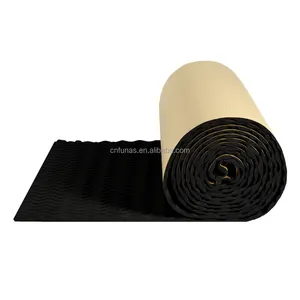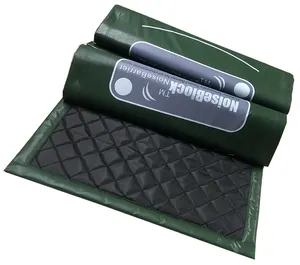Introduction to Sound Barriers
Sound barriers are specialized structures designed to mitigate noise pollution and enhance acoustic comfort in various environments. These barriers serve as a shield, significantly reducing the intrusion of unwanted external noises into a designated quiet zone. By incorporating sound-absorbing materials, these barriers are essential in creating serene spaces, particularly in areas adjacent to high-traffic roads, railways, or industrial zones.
Types and Materials
Sound barriers come in diverse forms, each tailored to specific requirements and settings. Materials range from dense, mass-loaded vinyl for maximum noise reduction to porous, absorptive composites that diminish sound energy. The choice of material is critical, as it directly impacts the barrier's effectiveness in sound attenuation and its suitability for different climatic conditions and aesthetic considerations.
Applications and Features
The application of sound barriers extends across residential, commercial, and industrial domains. These structures are not only pivotal in safeguarding residential areas from the cacophony of urban sprawl but also in ensuring acoustic regulation in workspaces where concentration is paramount. Features of these barriers include UV resistance, weatherproofing, and compatibility with various architectural styles, ensuring they meet the functional and visual demands of their application.
Advantages of Sound Barriers
Employing sound barriers offers a multitude of advantages. They significantly reduce noise levels, leading to a decrease in stress and an increase in overall well-being for individuals in noise-affected zones. Additionally, these barriers contribute to environmental sustainability, as many are constructed from eco-friendly materials that do not harm the ecosystem. Their design flexibility allows them to blend seamlessly into different landscapes, preserving aesthetic values while providing functional benefits.
Selection and Customization
Choosing the right sound barrier requires consideration of various factors, including the intensity of noise, the area's specific acoustic needs, and environmental conditions. While customization options are available to meet unique demands, it is essential to select a barrier that balances performance with practicality, ensuring an effective soundproofing solution without compromising on design or material integrity.
Environmental Impact and Sustainability
Today's sound barriers are increasingly designed with sustainability in mind. Eco-friendly options are available that not only serve their primary function of noise reduction but also contribute positively to the environment. These sustainable choices help reduce the carbon footprint and promote a healthier planet, aligning with global efforts towards environmental conservation.
sound barrier











































 浙公网安备 33010002000092号
浙公网安备 33010002000092号 浙B2-20120091-4
浙B2-20120091-4